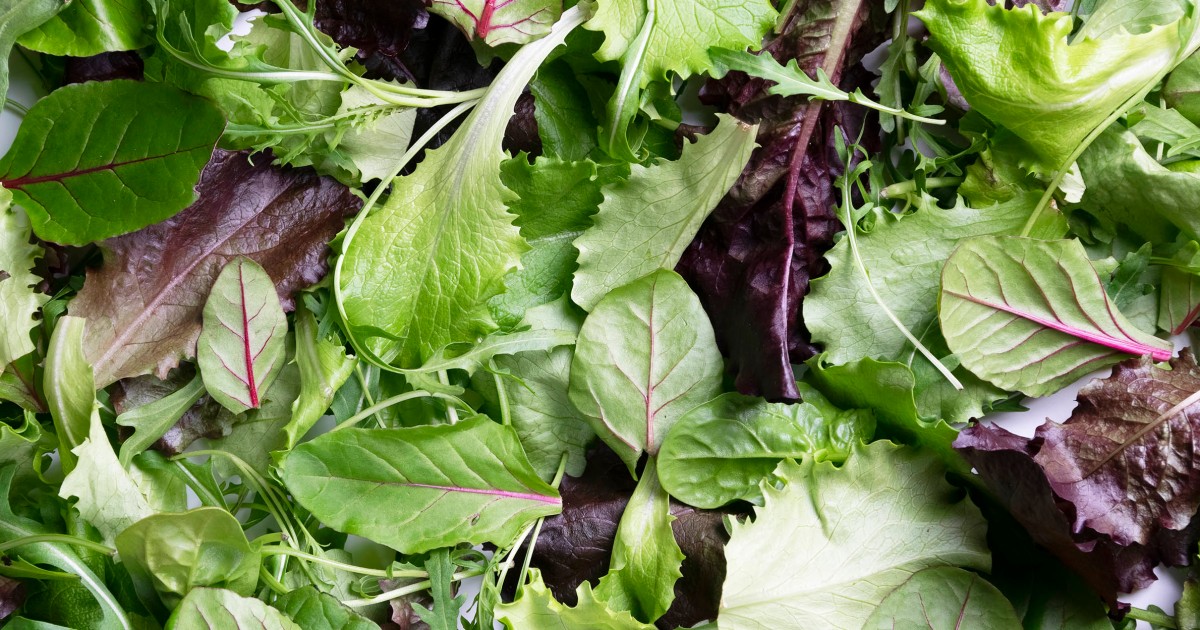Protein is an important macronutrient that should be part of everyone’s diet. This essential nutrient helps keep you feeling strong, full and energized throughout the day. But how much protein do you need? And which high-protein foods are best to eat?
“Protein is a macronutrient, meaning we need fairly large amounts to maintain health,” Julia Zumpano, a registered dietitian at the Cleveland Clinic, tells TODAY.com.
If you don’t eat enough protein, you might notice frequent muscle fatigue, difficulty building muscle, weak and brittle nails or dry and dull hair, Zumpano says.
And you may find yourself feeling hungry frequently. “Protein is really satisfying,” Zumpano explains. So if you’re hungry all the time, even though you’re eating enough calories, that may be a sign that you need to eat more protein.
Beyond that, protein is made up of amino acids, which “do so much in our bodies,” Caroline Susie, a registered dietitian based in Dallas, Texas, and spokesperson for the Academy of Nutrition and Dietetics, tells TODAY.com.
They repair muscle and tissue and help build muscle, bones and cartilage, Susie says. Amino acids also play a role in metabolic reactions in the body and immune system health, she adds.
Luckily, there are plenty of high-protein foods to choose from that are the building blocks of exciting, satisfying and delicious meals.
How much protein should you eat?
Unlike the days of the low-fat diet craze, people are generally more conscious of the need for protein nowadays, Zumpano says. “But most people don’t know how much protein they need, and they don’t know how much they’re taking in,” she adds.
The right amount of protein to eat daily depends on your age, weight, sex and activity level, so protein needs can vary widely from person to person. It may take some work to figure out the right amount of protein for you and your lifestyle.
A good place to start is with the recommended dietary allowance (RDA) for protein, which is 0.8 grams of protein daily per kilogram of body weight, Susie says. For older adults, that increases to 1.2 grams of protein per kilogram of body weight. “That’s the minimal amount, the basic requirement,” she explains.
If you’re pregnant or breastfeeding, actively trying to build more muscle or have certain other health considerations (such as osteoporosis), you need more protein than the RDA. A registered dietitian can give you specific recommendations based on your individual circumstances, the experts say.
Zumpano says most people she works with need closer to 1 to 2 grams of protein per kilogram of body weight in a day.
Another way to think of it, Zumpano says, is to aim to get between 20 and 40 grams of protein at each meal. “And making sure, if you have a few 20-gram meals, that you have a 40-gram meal and then a few 10-gram snacks,” she adds. This also helps space out your protein intake throughout the day, rather than trying to get it all at once.
The best high-protein foods
When you’re looking for the best high-protein foods, you’ll generally want to reach for lean meats and fish, eggs, dairy, beans, legumes, lentils, nuts and seeds, the experts say.
Chicken
Poultry, particularly lean chicken breast, is a great source of protein. A 4-ounce serving of skinless, boneless chicken breast contains 26 grams of protein, according to the U.S. Department of Agriculture. Chicken is a versatile protein that fits into many different types of cuisine, from salads and pasta dishes to simple roasted sheet pan meals.
Turkey
As with chicken breast, turkey breast meat comes with plenty of lean protein. Lean ground turkey is also great in meatballs, pasta sauces, taco filling and stir-fry dishes.
Salmon
Easily grilled, pan-fried or eaten raw in sushi, salmon is an excellent fish option that’s high in protein. There are about 17 grams of protein in a 3-ounce serving of salmon, the USDA says.
Tuna
Tuna is another high-protein fish that can be cooked in many ways. Try searing fresh tuna loin with pesto couscous for a light yet filling meal. Or use canned tuna in a salad or sandwich. A 3-ounce tuna steak provides 24 grams of protein and a can of light tuna contains about 16 grams of protein.
Lean beef
Lean beef includes certain cuts of beef, such as round tip roast and top sirloin steak, the Mayo Clinic says. And the category also includes lean ground beef, which can be used in meatballs, stuffed peppers, burgers, lasagna and more. There are about 18 grams of protein in a 3.5-ounce serving of 90% lean ground beef.
Greek yogurt
A cup of Greek yogurt provides about 10 grams of protein, Susie says, while a standard single-serving container usually has at least 15 grams. It’s an obvious easy choice for breakfast, topped with nutrient-rich berries, seeds and nuts. Try blending it into a smoothie or freezing it in a slab for some frozen yogurt bark.
Tempeh
If you’re looking for vegetarian protein sources, tempeh is a great option, Zumpano says, and it contains a whopping 31 grams of protein per cup.
Made from fermented soybeans formed into a cake-like block, this versatile food has a subtle nutty taste, a slightly chewy texture and can be cooked in virtually any sauce for a flavorful meal.
Cottage cheese
A trendy food yet again, cottage cheese packs plenty of health benefits. Just a half-cup of low-fat cottage cheese will give you 12 grams of filling protein. And, similar to Greek yogurt, cottage cheese can be topped with other healthy ingredients for breakfast or as a snack, or it can be blended into other foods — including eggs — to boost the protein content.
Black beans
When reaching for high-protein foods, people tend to go straight for meat and dairy, Zumpano says, while overlooking plant-based foods like beans, legumes and lentils.
Three-quarters of a cup of cooked black beans provides about 10 grams of protein, Susie says. “That can be added to salad, served as a side dish or mixed in with meat when you’re making tacos,” she says. As a bonus, beans are also high in fiber, which is great for gut and heart health.
Eggs
“I’m just a huge fan of eggs,” Susie says. “They’re very versatile. Whether it’s scrambled or hard-boiled eggs, they are going to be a wonderful option.” One large egg contains about 6 grams of protein.
Lentils
Lentils come with a ton of nutritional benefits. Just a cup of cooked lentils provides nearly 18 grams of protein and more than 15 grams of fiber, according to the USDA. They’re a great addition to soups and stews, and warm lentils can be the base for a filling protein-rich bowl topped with veggies and your choice of egg, cheese and meat or tofu.
Chickpeas
Legumes like chickpeas are another excellent plant-based source of protein, the experts say. A cup of chickpeas has about 14 grams of protein and more than 12 grams of fiber, the USDA says.
Chickpeas make a great addition to a salad, or you can try roasting them with your favorite spices for a crispy high-protein snack.
Peanut butter
Nuts and nut butters are both good sources of protein and healthy, filling fats. Peanuts, which are technically legumes, provide 12 grams of protein per cup. And 2 tablespoons of peanut butter will give you about 7 grams of protein. That makes both of these easy options for a healthy protein boost.
Flaxseeds
Flaxseeds are probably some of the most popular high-protein seeds, Susie says, with 2 grams per tablespoon. They can easily be sprinkled on yogurt with granola or blended into a protein and fruit smoothie. But if you prefer sunflower seeds, pumpkin seeds or sesame seeds, “that’s fantastic,” she says.
Nuts
If you’re looking for high-protein nuts, almonds are an obvious go-to. Just an ounce of almonds contains 6 grams of protein, 14 grams of fat and 6 grams of fiber — all of which make these crunchy nuts a particularly satisfying and nutritious snack.
Pistachios (6 grams of protein per ounce) and walnuts (4 grams of protein per ounce) are also good options for a high-protein and high-fiber homemade trail mix.
Seitan
Seitan, another meatless source of protein, is made from wheat gluten, Zumpano explains. You can even make it yourself at home just using water and flour.
It has a fibrous texture that can be pulled apart so its similar to shredded chicken or pork, and a 2-ounce serving of seitan contains about 17 grams of protein.
Tofu
Perhaps the most well-known protein-rich meat alternative, tofu is made from fermented soybeans. And, depending on your chosen tofu texture, it can be fried, baked, stirred into a soup or turned into a sweet pudding.
Chia seeds
Adding chia seeds to your morning yogurt or lunchtime salad bowl is an easy way to boost the protein and fiber content. Or try making chia pudding overnight in the fridge, mixed with peanut butter and topped with fresh fruit. An ounce of chia seeds will give you almost 5 grams of protein and nearly 10 grams of filling fiber.
Read the full article here
















